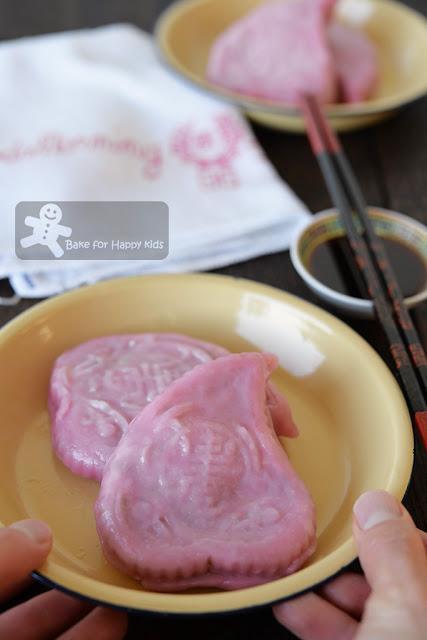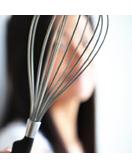Yes! I'm going to be on TV!!!
Mine is the coming 7th episode that is going to be screened on 18 May 2016, Wednesday, 8pm (Singapore time) and one of the top 10 most popular Singapore female Mediacorp artiste will be on the show with me. So please stay tune!
We love watching this show but due to the fact that we are not living in Singapore, we have limited access to the previous episodes. Yet, we have managed to catch up a few short glimpses of previous episodes. After we watched the episode that was showing food blogger Kenneth from Guai Shu Shu and celebrity Kim Ng making Teochew Png Kueh, my son kept telling me that I have to make Png Kueh for him.
"Mum, I always want to try this pink kueh when we were in Singapore but I never get to eat it!" said my son.
"Eewww... Png Kueh!!!" My husband gave us the disgusted look. "Please don't cook Png Kueh because I hate the thick rubbery skin and the glutinous rice is so difficult to digest!!!" The old man was trying to convince me to cook any Png Kueh for our family.
Then we had these never ending of "Pleaseeeee... Mummy!" and "No... Mummy!" Gosh! What should I do??? My husband and son were driving me crazy!!!
Being caught in between my husband and son, I was feeling indecisive but curious too because the inquisitive side of me is telling me that I'm LOVING this challenge!!! Ha ha! The challenge of finding an ideal recipe that can make good Png Kueh. Good Png Kueh? Any definition??? For the sake of my husband, I'm gonna make good Png Kueh that has NO thick rubbery skin with tasty and easy to digest glutinous rice filling.
Where and how should I start? Google, of course! For my first hit, I saw this recipe from Annielicious and it looks brilliant! After reading and analyzing her recipe very carefully, I'm pretty sure that Annie's recipe is going to be a good one and have to incorporate a few more essential steps in order to make the perfect Png Kueh that I'm after...
1) No thick skin - To avoid making kueh skin that is too thick, I have seen recipes that roll the dough to fit into the mold first, fill the dough with filling and seal the filling with the overhanging dough. This wrapping technique will help to make the skin thin, uniform and nice. So it is a NO NO for me to wrap the filling into the dough first and then press the wrapped kueh into the mold... NO NO!!!
2) No rubbery skin - To avoid tough rubbery skin, I prefer to use recipe with NO glutinous rice flour added and this is why I'm not using Kenneth's recipe and also other recipes like this. Having said that, some might said that kueh with no glutinous rice flour are not "boing boing" enough. Totally true! ... but I prefer not to take this risk. I'm sure that I will be happy enough to enjoy kueh with less QQ (meaning chewy texture) but with 100% success. Rubbery vs Success? QQ vs less Boing Boing? No right! No wrong! It's really up to you to choose.
3) No lard please - For our health, I like to make this traditional kueh with moderate amount of good oil and also prefer not to use recipe that contains lard.
4) No hard indigestible glutinous rice - I must say this is also another very subjective preference. When I was little, my grandma and I used to cook glutinous rice by steaming. I remember that she is always so proud of her steamed glutinous rice, pointing to me that every grain of her rice is so glossy and well defined with a nice finishing chewy bite. Can you imagine serving my husband this kind of glutinous rice? He will probably eat one spoonful or two and whine for the rest of the day... LOL! For me, I really don't mind eating glutinous rice that is steamed and chewy or cooked with absorption method and soft. For my husband, I guess my choice is clear!
I know what sort of Png Kueh I want to make now. Do you? Ready. Action...
Teochew Png Kueh / Steamed Glutinous Rice Dumpling / 潮州饭粿

This is me filming an episode of Touch Screen Cuisine 弹指间的料理 at Mediacorp studio.
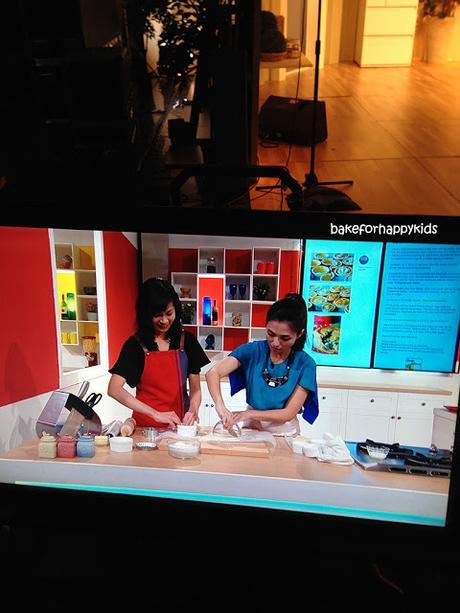
So remember to watch me on 18 May 2016 (the coming Wed), 8.00pm (Singapore time)!!!
Now back to me making Png Kueh :)
On the night before...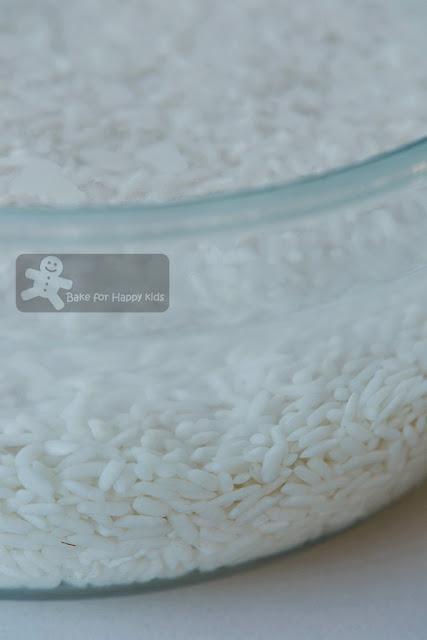
Soak glutinous rice with adequate water.
Due to food safety, please remember to soak rice in the fridge if you are doing this for more than 8 hrs.
On the day that I made my kueh, I did these...

You can cook the glutinous rice by steaming or water absorption method by using a rice cooker or a pot on a stove and I cooked by using the easiest rice cooker method.
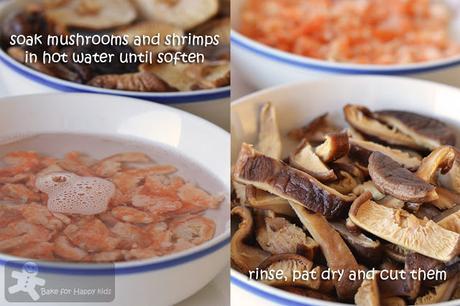
Then I did these.
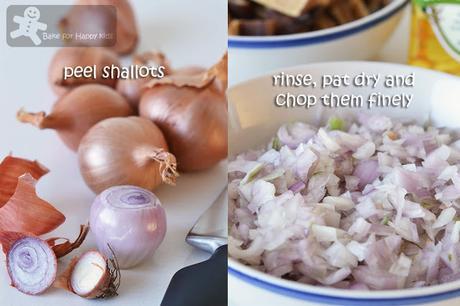
And these.
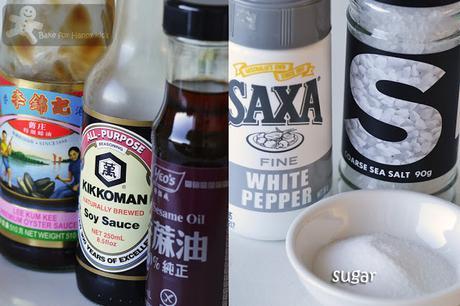
Combine these seasonings. Set aside.
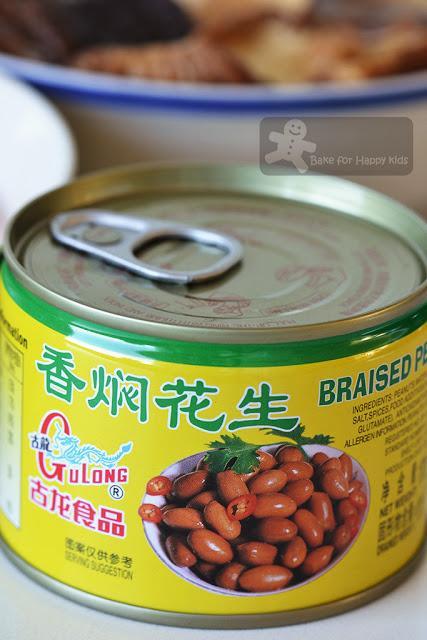
Instead of braising the peanuts from scratch, I'm pinching Annie's idea to use the canned ones :p
So easy, convenient and delicious!!!
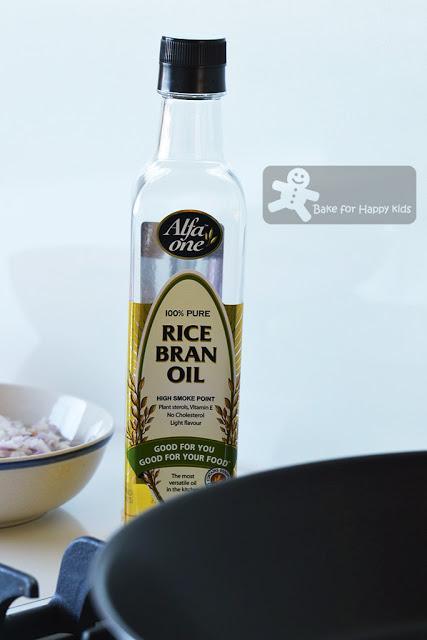
Instead of using lard, I'm using the healthful Alfa One Rice Bran Oil to cook my filling and make my kueh skin.
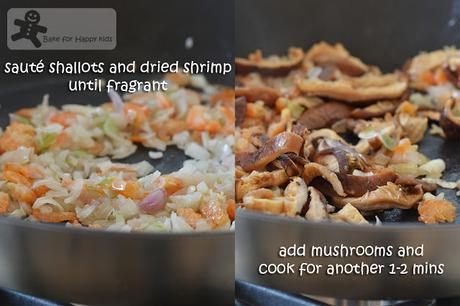
All ready! So I started cooking the filling.
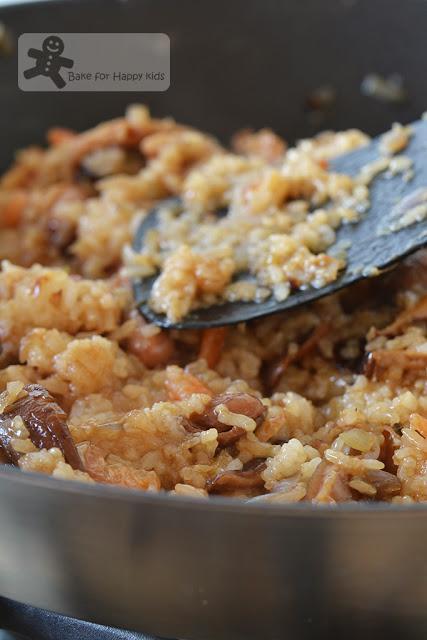
Stir in the glutinous rice and seasonings.
All done! Set aside to cool.
To make the kueh skin, I'm using this recipe that uses rice flour. Prior making these kueh, I have tried another recipe that uses rice starch (from a book) and it was bad. Thus I'm not going to mention this recipe! Unlike tapioca starch which is the same as tapioca flour, rice flour is not the same as rice starch and so please make sure that you use the right recipe and also the right ingredient.
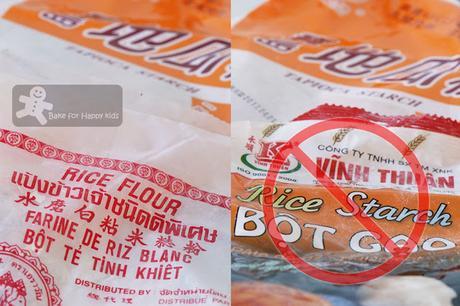
Yes to rice flour. No to rice starch!
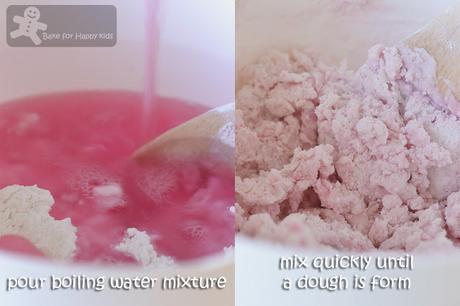
It is important to do this step quickly and allow the boiling water to cook the dough.
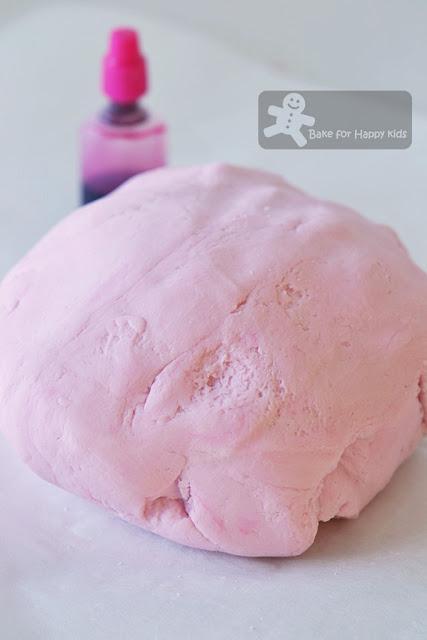
And knead until the dough is soft and pliable.
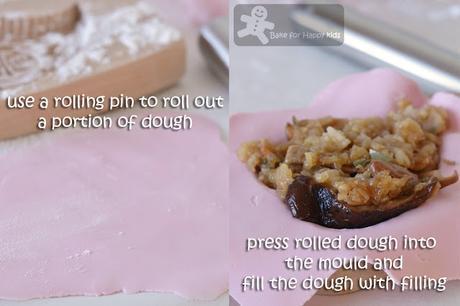
Instead of wrapping the filling into the rolled dough then use the mold to shape the kueh, I'm pressing the dough into the mold and fill the dough with the filling.
This step will make your kueh nicely shaped and has a thin and uniformly rolled skin.
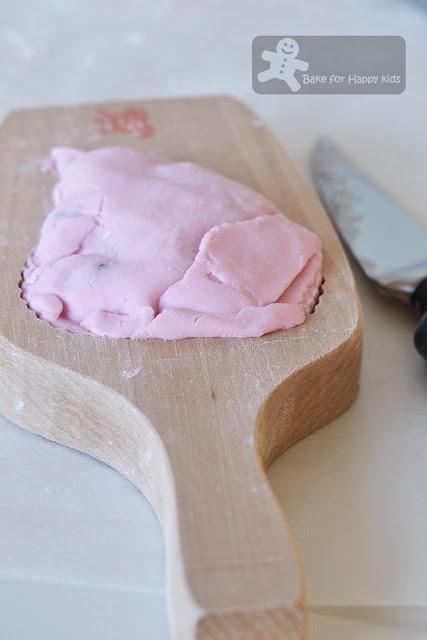
Use the overhanging dough to seal your kueh.
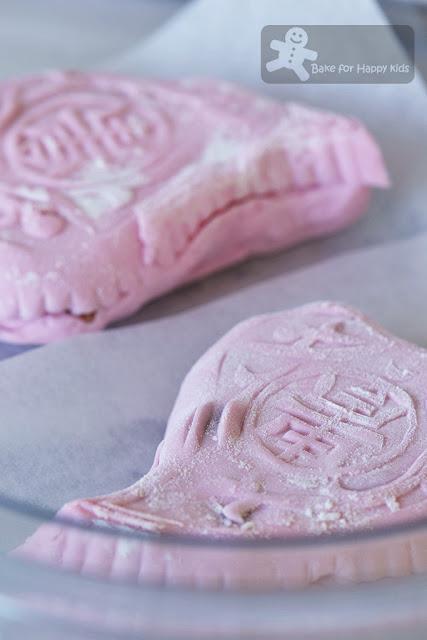
Give your mold a gentle knock and your kueh will come out nicely!
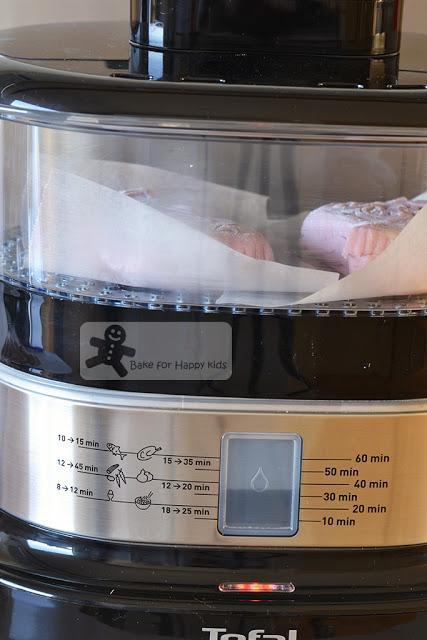
Steam your kuehs until the skin is thoroughly cooked.
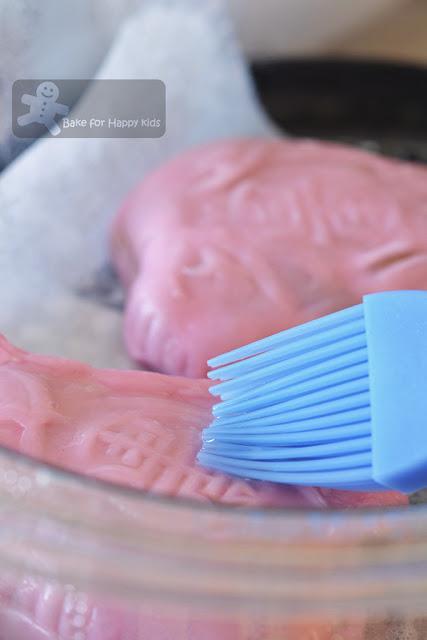
And brush with a layer of oil when they are freshly steamed.
You can either serve and eat the freshly steamed kueh at this point or you can shallow fry the kueh into this...
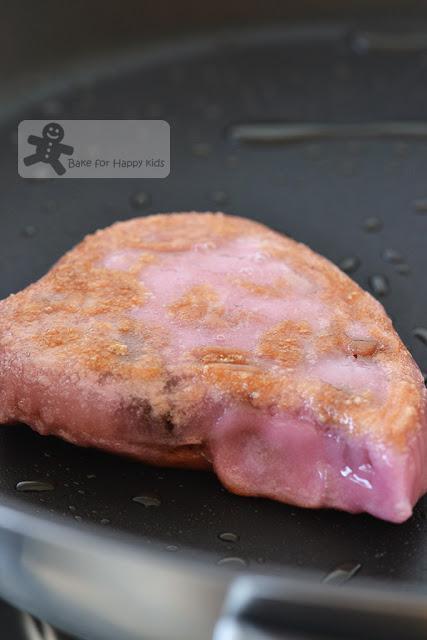
Oh... I love the crispy and chewy skin of lightly fried png kueh! So yummy!

Now I'm ready to eat!
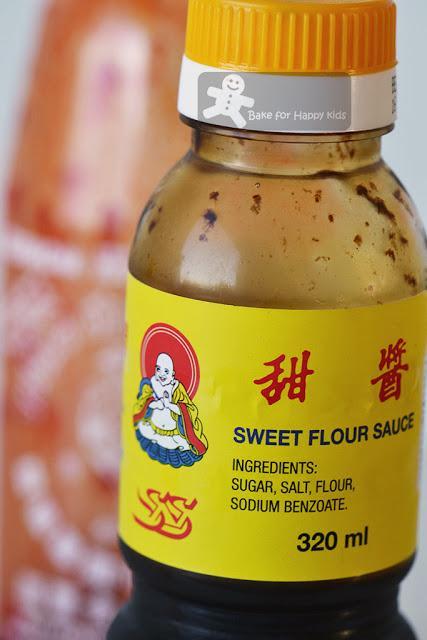
For the most traditional taste, it is best to enjoy your kueh with this sweet dark sauce or any of your fav chilli sauce.
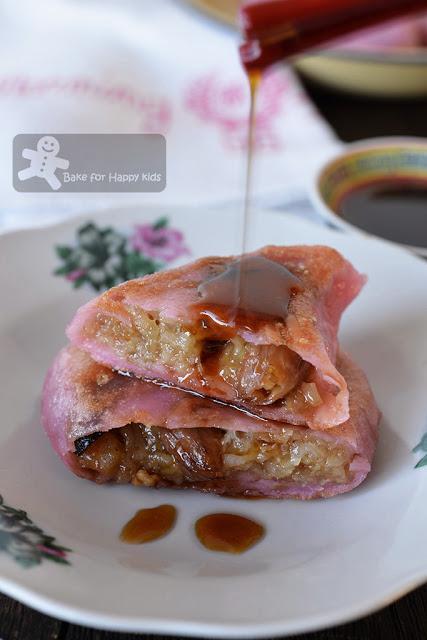
Png kueh with thin chewy crispy skin and served with sweet dark sauce...
OMG! This is totally epic!!!
My son can eat 3 of these all at one go and within less than 10 minutes!!! My anti-Png-kueh husband wasn't complaining... LOL! Me? I will definitely make these Png Kueh again!!!
Here is the recipe that is mostly modified from Annielicious with many additional tips to share.
Makes about 22-24 portions depending on the size of the mold used
For the easy glutinous rice filling: 350g (1 3/4 cup) glutinous rice, preferably the long grain kind12-14 (about 35g) dried shiitake mushrooms, it is best to use the amount according to the number rather than weight as the weight is depending on the size and compactness of the mushrooms you used.
40g dried shrimps
12 small or 6 large shallots
1 can (weight of the can is 170g) braised peanuts*
4 tbsp cooking oil, preferably something neutral tasting, smooth and healthy like Alfa One rice bran oil
* Thanks Annie! I love love love this fuss free idea of using braised peanut from a can... but if you prefer to cook 100g dried peanuts from scratch, you will have to soak the peanuts in water overnight in the fridge and cook them in a high pressure cooker for 20 mins or until well soften.
To season:
1 tbsp oyster sauce½ tsp sesame oil
3 tbsp soy sauce
1½ tsp caster sugar
½ tsp salt
1½ tsp ground white pepper
6 tbsp (90ml) water
For the skin:
400g rice flour, plus extra to dust
80g tapioca flour
1 tbsp caster sugar
1/2 tsp salt
560ml water
2 tbsp cooking oil, preferably something neutral tasting, smooth and healthy like Alfa One rice bran oil, plus extra for brushing
a few drops pink colouring (Mine is the natural one from Queen and so it is not as intense as the artificial ones)
Note: I would highly recommend this recipe as this dough is so easy to work with!
To serve:sweet dark soy sauceany kind of chilli sauce that you likea handful of coriander to garnish, optionalTo cook the filling:
>>> On the night before
Soak the peanuts in adequate amount of water in the fridge if you are cooking the peanuts from scratch.Wash and rinse glutinous rice for about 2-3 times with adequate amount of water or until the water used for washing is no longer cloudy. Add adequate amount of water into the washed rice and let the rice soak overnight in the fridge. Please be aware that (1) the rice will absorb the water while soaking and so it is always better to add extra water rather than too little. (2) Do NOT soak rice at the room temperature for more than 8 hrs as it is not safe to do that.
>>> On the cooking day
Soak mushrooms and shrimps in hot boiling water for a short 5-10 mins or until well soften. Do not soak them for too long as they will lose their flavours into the water. Sayang leh! (meaning what a waste) Rinse and pat them dry. Then slice the mushrooms and cut dried shrimps into small pieces that you like to chew on. We like our dried shrimps to be rather chunky and so I have cut mine into chunky pieces.Peel shallots, rinse, pat dry with kitchen towel and chop them finely.
Drain braised peanuts from the can and discard the braised sauce.
Combine all seasonings in a small bowl.
Cook glutinous rice. You can cook glutinous rice using a rice cooker, steamer or on a stove. For me, I have chosen to cook the rice using a rice cooker because it is the easiest way to cook glutinous rice and will produce glutinous rice that is rather soft and easier to digest.
To cook glutinous rice using rice cooker method: Drain the soaked glutinous rice well. Assuming that the amount of the retaining water in the drained rice is about 1/2 cup, top the glutinous rice with 1 3/4 cup (430 ml) of water. If you prefer not to agak agak (meaning estimate in Malay) and want to be super critical with the amount of water added, you can use a sieve to drain the rice very thoroughly and add 2 1/4 cup (560 ml) water into the washed and thoroughly drained glutinous rice.
Switch on your rice cooker preferably with glutinous rice function) to cook the rice. If your rice cooker has an automatic function, it will cook and rest the rice accordingly. If it doesn't, allow the rice to cook until all the liquid has been absorbed, about 15 to 20 mins, switch off the heating and allow the rice to rest for at least 10 mins. Make sure that the rice is well covered and set aside to allow the rice to cool completely.
If you want your rice to be defined firm and glossy with chewy texture, you can choose to steam your glutinous rice. Drain the soaked glutinous rice well. Without adding any additional water, transfer the rice into a large bowl and steam it with medium heat for 25 mins or soft enough to eat. If you like your steamed rice to be softer, splash 1-2 tbsp water into the glutinous rice in every 10 mins of steaming until your rice is cooked according to the consistency that you like. Kind of agak agak but this is the way my grandma used to do too. Make sure that the rice is well covered and set aside to allow the rice to cool completely. If you like to use the other methods, please see here for more instructions.
>>> Cooking the filling
Pre-heat a wok or a large frying pan in medium heat with 4 tbsp cooking oil. Sauté shallots and dried shrimps for 2 mins or until fragrant. Add mushrooms and cook for about 1-2 mins.Reduce heat to low and stir in the cooked glutinous rice. Break the lumpy glutinous rice apart while stirring the rice into the mushroom mixture.
Add seasonings, stir and toss well making sure that the glutinous rice is well coated with seasonings. Stir in braised peanuts. Remove from heat. Cover the rice with a wet cloth or a cover to prevent the top layer of the glutinous rice from drying out. Set aside for the rice to cool well enough before using the filling for wrapping.
To make the skin:
In a large mixing bowl, combine rice flour, tapioca flour, sugar and salt. Set aside.In a saucepan, bring water to boil. Just after removing the boiling water from the heat, stir in the oil and a few drops of pink colouring until the solution is pink enough to use. Pour boiled water into the rice flour mixture and mix quickly with a wooden spoon until a dough is formed.
Using your hand, knead dough until it pliable and smooth and it is now ready for wrapping. While wrapping and shaping the kueh, it is important to cover dough with a damp cloth or cling wrap to prevent the dough from drying.
To assemble, wrap and steam the kueh:Dust png kueh mold especially its groove with a good sprinkle of rice flour.
Instead of dividing the dough into equal portions by weight, it is ok to divide the dough into 20 portions by estimation. You don't have to be exact and you will see why I did it this way.Using a rolling pin with the minimal amount of rice flour to dust, roll each portion of dough into a large round with about 4mm thickness. Place the rolled dough loosely over floured mold and use your fingers to press the rolled dough gently to fit into the groove of the mold with good amount of dough overhanging outside the shape of the mold.
Fill the dough with the glutinous rice filling and flip the overhanging dough around the rim to cover the filling. Trim off any excessive dough if required and you can reuse these trimmed dough to assemble subsequent kueh later. Seal by pressing and pinching the dough together. Turn mold over and knock the assembled kueh onto lightly floured work surface. At this stage, please do not use a knife to trim off any excess dough at the side of the kueh as any of these trimming might slit the sides of the kueh! They will look ok after steaming... So no fuss and no worries!!! Repeat this assemble and shaping step until all the dough and fillings are all used.Place the assembled and shaped kueh on a small piece of baking paper that is cut according to the same size of the kueh. Arrange kuehs in steaming trays or baskets with steam ventilation holes and steam kuehs for about 15 mins with low heat or until cooked. Please do not over steam kuehs as their skin will become gluey and slimy.Using a pastry brush, brush oil on the freshly steamed png kuehs. Serve immediately... Or if you like something crispy and chewy, you can shallow fry with about 2-3 tbsp cooking oil the kueh in a flat frying pan with medium high heat until the skin of the kueh become crispy. Whether you are frying the kueh or not, it is best to eat the kueh while they are warm.
Store uneaten kueh covered either at room temperature within the same day that they were made or in the fridge up to 3 days. Before serving, it is best to steam the stored kueh until they are warm and soft again.Enjoy with sweet dark soy sauce and your favorite chilli sauce.Happy CookingPlease support me and like me at Facebook...
